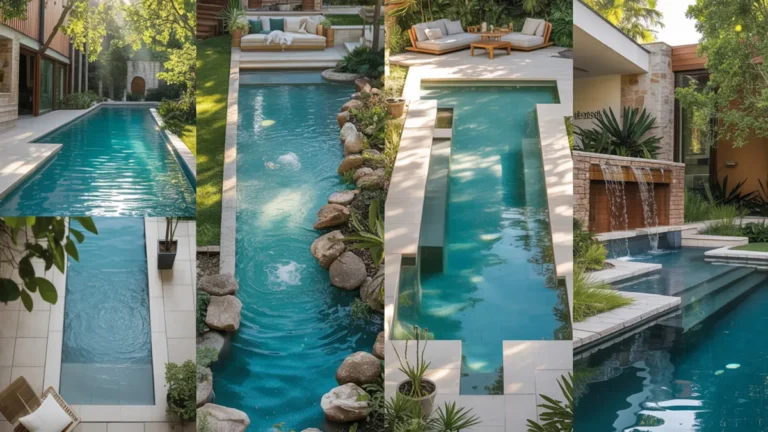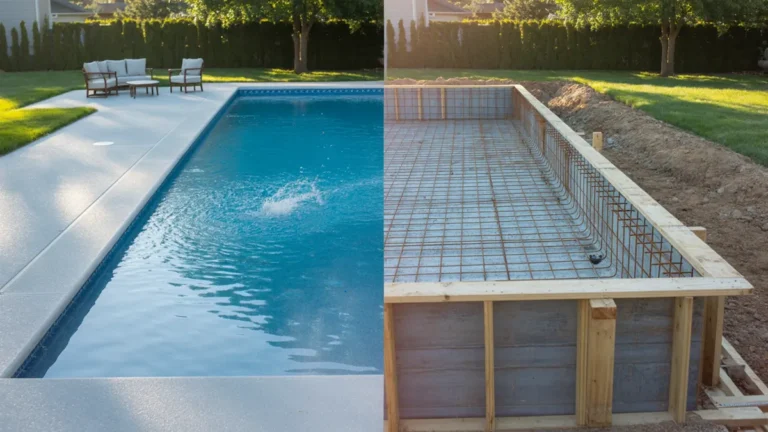Installing a pool is a major home upgrade, but beyond the concrete, water, and design lies a critical hurdle: legal permission. Most jurisdictions in the U.S. require homeowners to obtain a permit before building a pool, especially when it’s in-ground or includes electric and plumbing systems. Such regulations are specifically designed to ensure safety, structural stability, and code compliance.
So, whether you are planning a sleek lap pool or a family-friendly splash zone, understanding the permit requirements will save you from costly mistakes, delays, and penalties.
When Is a Pool Permit Required?
Depth and Size Thresholds
Many local governments draw a clear line at 24 inches of water depth. Pools that exceed this, regardless of whether they’re in-ground or above-ground, typically require a permit. Some areas also consider surface area, often triggering permit requirements for pools over 150 square feet.
In-Ground Pools
If you’re installing an in-ground pool, expect to go through the permit process. These are considered permanent structural changes and involve various code considerations including excavation, plumbing, electrical, and fencing.
Above-Ground Pools
Not all above-ground pools require permits. Smaller, seasonal models may fall below the regulatory threshold, but once they include filtration systems, decks, or exceed certain dimensions, permitting becomes mandatory.
Who Issues Your Pool Permit?
Permit authority usually falls under the city or county building department. In some regions, multiple agencies may review the plans, including zoning boards, environmental health departments, and utility districts. If you live in a community governed by a homeowners’ association (HOA), you may need their approval before proceeding, even if the municipality grants you a permit.
Permit Types & Required Documents
Although most jurisdictions use a basic “Residential Building Permit” form, the documentation package needed for pool construction can be extensive. Expect to prepare or obtain the following:
- Site Plan: Includes dimensions of the property, location of the pool, distances from structures and property lines.
- Structural Plans: Drawings from an engineer or architect that detail how the pool will be built, including reinforcement and concrete specifications.
- Plumbing and Electrical Diagrams: Required for any pool with lighting, heating, circulation pumps, or automatic chlorinators.
- Fence or Barrier Plan: To show how you’ll comply with local safety laws for enclosures, gates, and alarms.
- Proof of Ownership and Liability Insurance: Verifies your legal right to build and that you carry appropriate coverage.
For prefabricated or kit-style pools, you may also be asked to include manufacturer specifications.
Step-by-Step Permit Process
1. Pre-Design Consultation
Before drafting anything, visit or contact your local building department. They can provide guidelines, checklists, and sample plans that clarify what’s needed in your specific area.
2. Drafting and Engineering
Hire a qualified designer, contractor, or engineer to prepare the necessary plans. These drawings must conform to national building codes as well as any local amendments.
3. Application Submission
Depending on your location, this may be done online or in-person. Some jurisdictions require multiple paper copies of your documents.
4. Plan Review
The review process can take anywhere from a few days to several weeks. Complex projects, incomplete documentation, or backlogs during peak season can extend the timeline.
5. Inspections
Once your permit is approved and work begins, several inspections may be required. Common stages include:
- Excavation
- Structural Steel
- Electrical and Bonding
- Plumbing Pressure Test
- Final Safety and Barrier Inspection
6. Final Approval
After passing all inspections, the final sign-off allows you to fill and use the pool. Permits often come with expiration dates, usually ranging from six months to a year if work hasn’t started.
How Long Does Approval Take?
In standard cases, permits are approved in 2 to 12 weeks. High-demand seasons, such as spring and early summer, can result in longer wait times. Delays are also common if your project requires special exceptions, such as zoning variances or environmental impact studies.
Fees and What Affects Them
Pool permit fees vary depending on the location, size, and complexity of the project. Typical ranges include:
- Base Fee: Between $450 and $1,800 for most residential pools.
- Valuation-Based Fees: In some areas, fees are calculated based on the total project cost. For example, $15 per $1,000 of pool value.
- Additional Charges: Some localities charge for separate inspections, engineering reviews, or expedited processing.
- Re-Submittal Fees: If your initial plans are rejected or need revision, expect to pay a resubmission fee.
Some homeowners hire permit “expediters” to handle the paperwork for a fee, especially helpful in cities with complex or overloaded review processes.
Risks of Skipping the Permit
Bypassing the permit process can lead to serious consequences:
- Fines: Many local governments impose daily fines that range from $100 to $500 until the situation is resolved.
- Retrofitting Costs: You may be required to uncover or alter completed work to bring it into compliance.
- Permit Penalties: Retroactive permits often cost more than filing up front, and approvals are not guaranteed.
- Forced Removal: In extreme cases, you may be ordered to remove the pool entirely.
- Insurance Void: Unpermitted work can invalidate your homeowner’s insurance policy.
- Property Value Loss: Illegal improvements can delay or cancel a home sale and reduce the appraised value.
Special Permit Considerations
Seasonal and Portable Pools
Smaller inflatable or soft-sided pools under 24 inches deep usually don’t need permits, but they must still comply with safety rules like fencing if left up for the season.
Rural or Agricultural Properties
In more remote areas, requirements may be relaxed, especially for non-electric livestock or stock-tank pools. However, documentation of any exemption is still wise.
Pool Enclosures and Safety Covers
A powered safety cover might not substitute for a fence unless specifically allowed by local code. Similarly, enclosed structures like retractable domes might require their own permit.
Tips for a Smoother Process
- Submit Plans in the Off-Season: Winter and late fall often have faster turnaround times due to reduced application volume.
- Hire a Licensed Contractor: Professionals like Outdoor Visual Werks are familiar with local codes and can handle inspections efficiently.
- Communicate with Your HOA: Align their requirements with city codes to avoid duplicate revisions.
- Keep All Documentation: Stamped drawings and inspection approvals can be valuable during resale or insurance claims.
- Budget for Contingencies: Set aside 10–15% of your permit budget for unexpected changes or plan revisions.
Don’t Treat Permits as Optional
Building a pool is more than a construction project—it’s a regulated activity with legal and safety implications. Getting the proper permits is a necessary part of the process that protects your investment, ensures code compliance, and keeps your property insurable and marketable.
While navigating permits may feel tedious, a well-prepared application and a reputable contractor can move the process along efficiently. For expert guidance on pool design and construction services, consider partnering with professionals like those at Outdoor Visual Werks. Don’t treat permits as optional. Treat it as step one.




